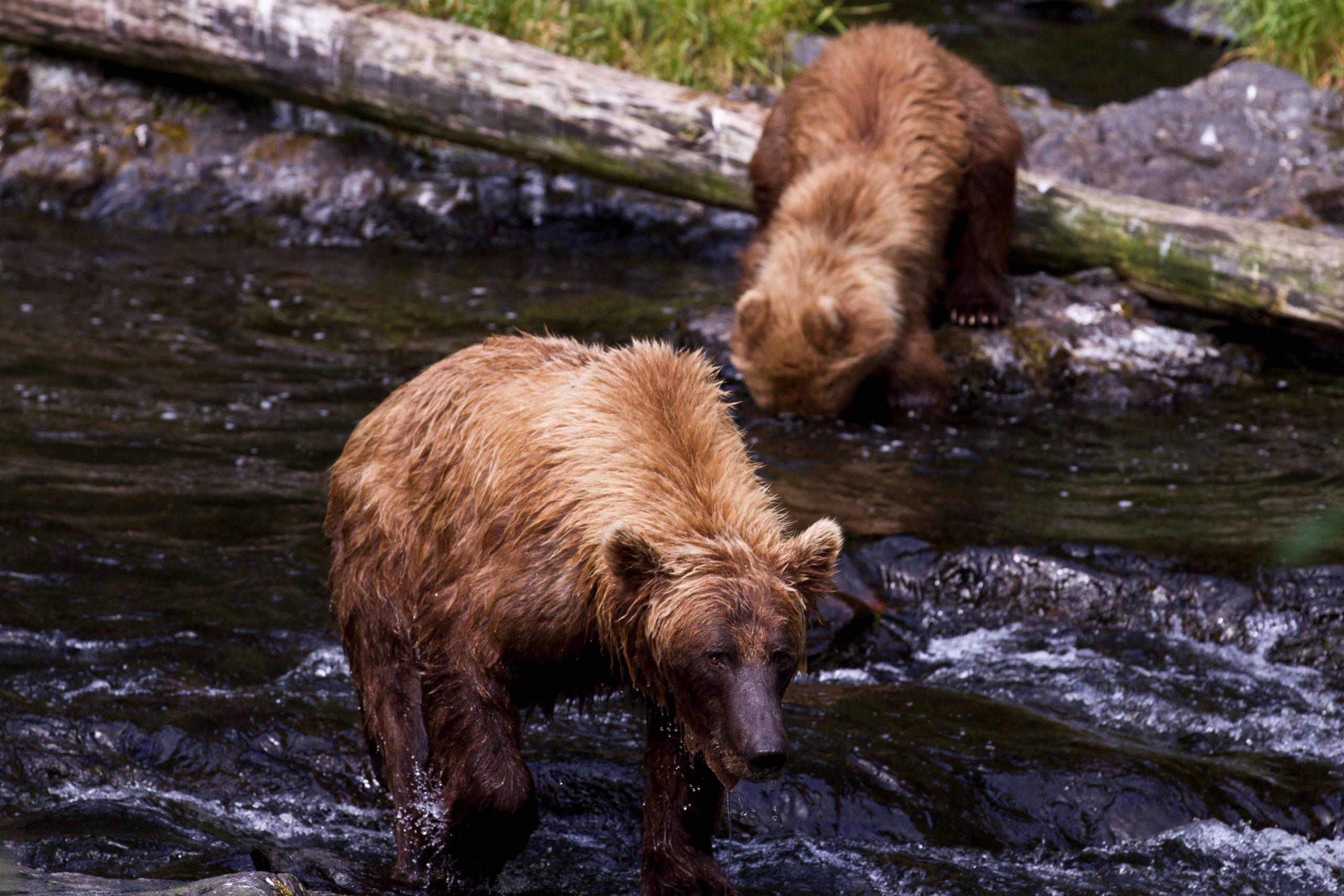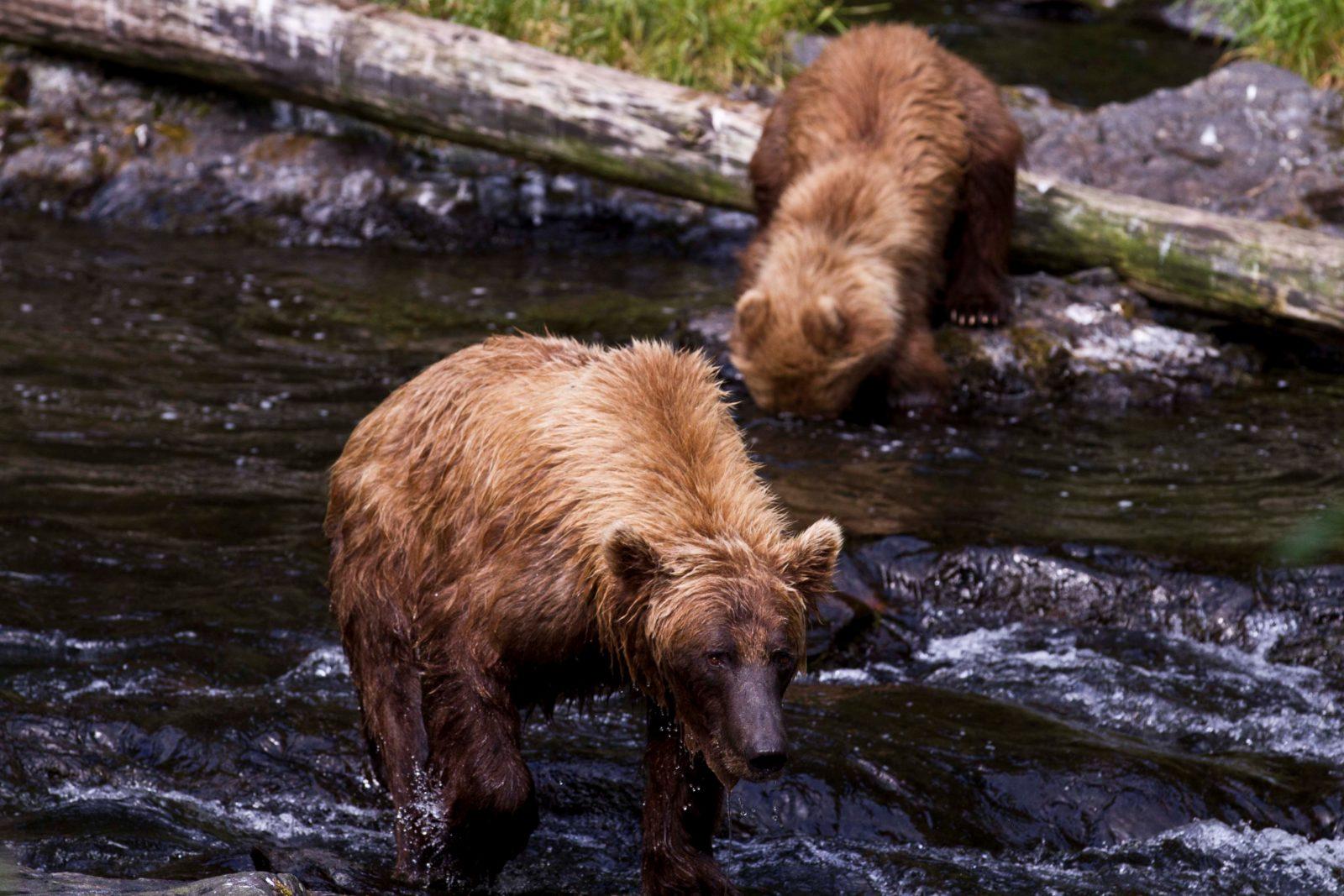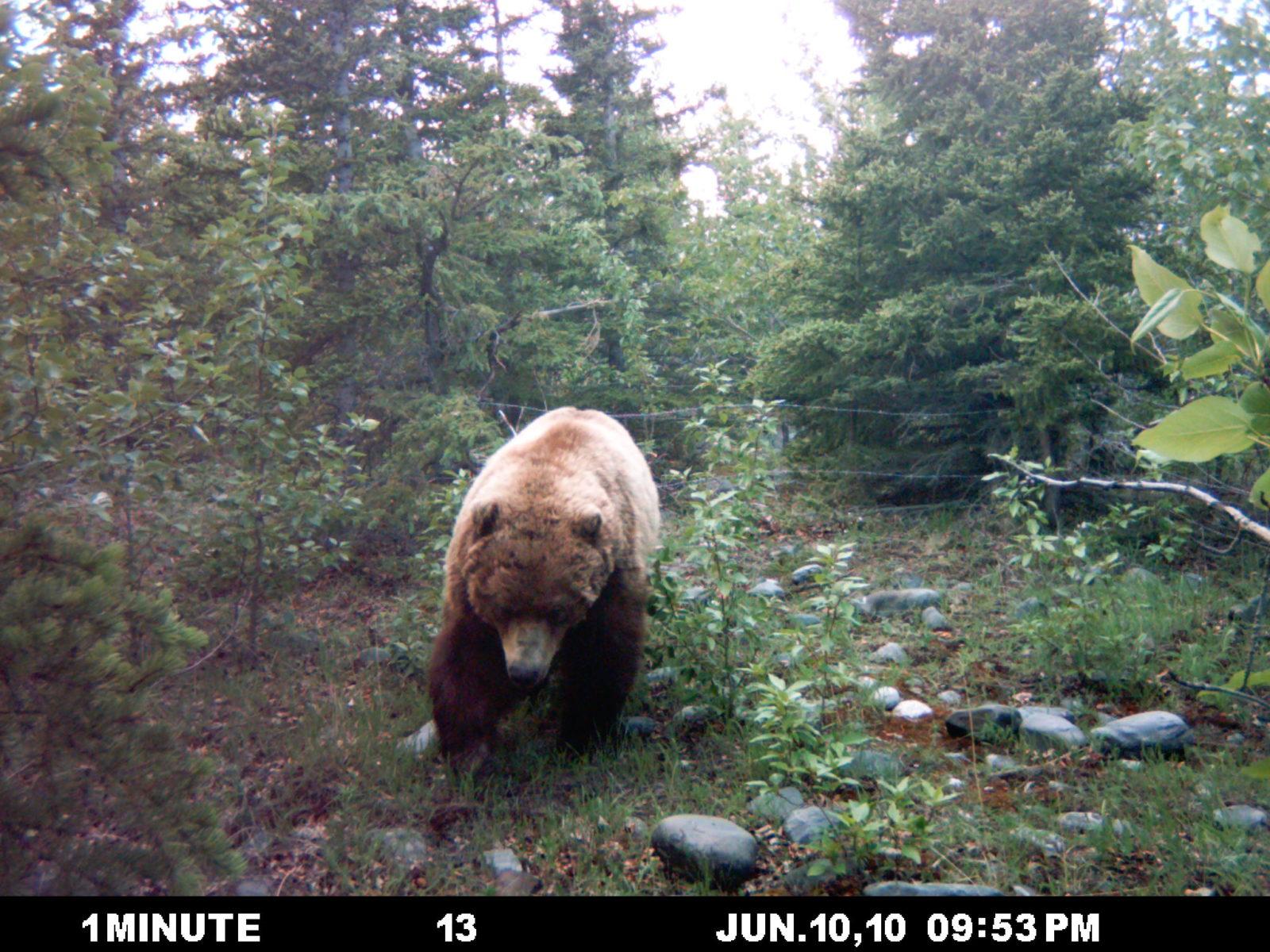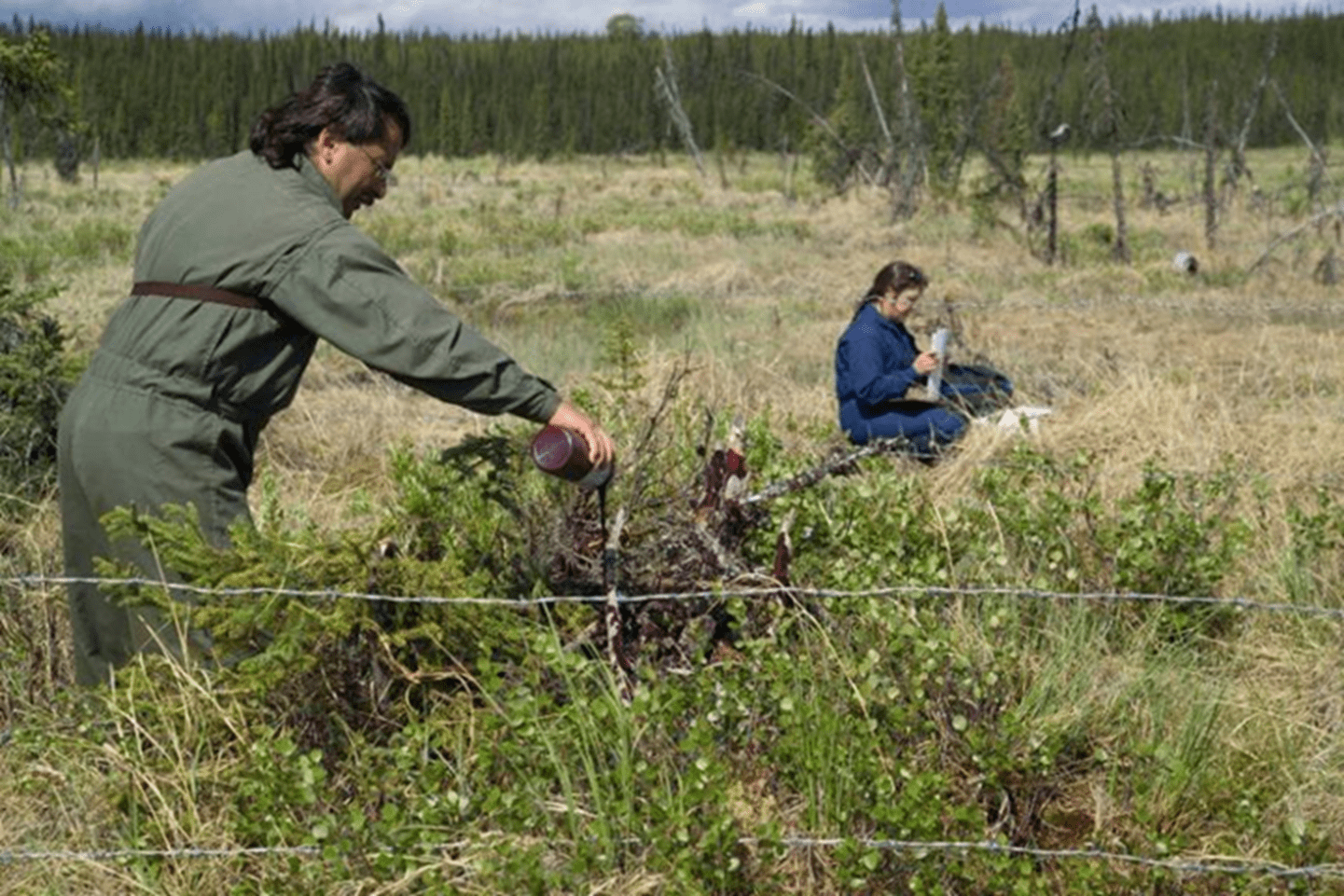
The island life of Kenai Refuge brown bears
By Presley West, digital communications coordinator
Every year, Alaskans head to the Kenai National Wildlife Refuge for boating, hiking, fishing, spotting animals, and much more. An increasing number of people are calling the Kenai Peninsula home, too. A few hundred brown bears call the peninsula home as well—and human expansion and human-caused deaths of those bears pose a huge risk to that population.

A geographic bottleneck
“What makes the Kenai brown bear population unique—that it’s a peninsula population— is also what makes it vulnerable,” said John Morton, Ph.D., the vice president of the Alaska Wildlife Alliance and a researcher of bears on the Kenai.
Though the Kenai Peninsula isn’t an island, the narrow Kenai isthmus—at only 10 miles wide and with human development—creates a sort of “geographic bottleneck” that proves extremely difficult for large mammals, like brown bears, to cross over. The result is a peninsula population that acts like an island population.
In other words, there’s not a lot of movement of bears from say, Anchorage or the Interior, onto the peninsula, so the Kenai brown bear population is reliant on its own procreation.
Moreover, as more and more people move onto the Kenai Peninsula, brown bears have fewer places to go. This habitat loss makes it harder for these bears to eat, raise cubs, and thrive, while adding to stresses on the population. Human trash attracts bears, for example, and increases encounters with people. Bears that people view as “problem bears” often get shot.
The real threat arrives on two feet (and wheels)

Human-caused mortalities pose the greatest risk to this isolated population, even in the Kenai Refuge, according to Morton, who previously worked as a supervisory biologist for the Kenai Refuge.
In 1998, the Alaska Department of Fish and Game designated these bears as a “population of special concern” because of their vulnerability, but the state of Alaska discontinued its Species of Concern program in 2011 and state protection for the Kenai brown bears disappeared.
Since then, state regulations have extended hunting seasons, increased the cap on the number of bears killed, and legalized brown bear baiting on the Kenai Peninsula—all practices that further threaten the health of this population.
A decreasing population of Kenai Refuge brown bears
The push for tactics like brown bear baiting centers on the flawed assumption that killing brown bears will increase populations of game animals like moose that some hunters covet. In fact, predator animals like bears have complex roles and interrelations with other animals and with the health of the habitat all wildlife rely on for survival.

Alaska is the only place in the world with a management program designed to reduce brown bear numbers by encouraging increased hunting by members of the public. This tactic is disturbingly effective. The killing of brown bears in game units encompassing the Kenai Peninsula increased dramatically (by nearly tenfold) immediately after brown bear baiting was allowed.
Morton, who conducted a recent population study of Kenai brown bears, said those numbers put the entire population at risk. Morton found an 18 percent decline in the population between 2011 and 2014, which shows the threat baiting brown bears poses to this population. The number of bears killed since 2014 has declined, likely due to the decreased population of these bears, which have the lowest reproductive rate of any large mammal in North America.
We’ve won in court against proposed brown bear baiting in the Kenai Refuge; that kind of practice would prove devastating to the hundreds of bears that live and move through the Refuge and to the Alaskans who enjoy wildlife viewing in the area, as well as the visitors from around the world that travel to these public lands to see bears. We will continue to fight for wildlife and policies that protect wildlife diversity and health in the Kenai Refuge and across the state.


